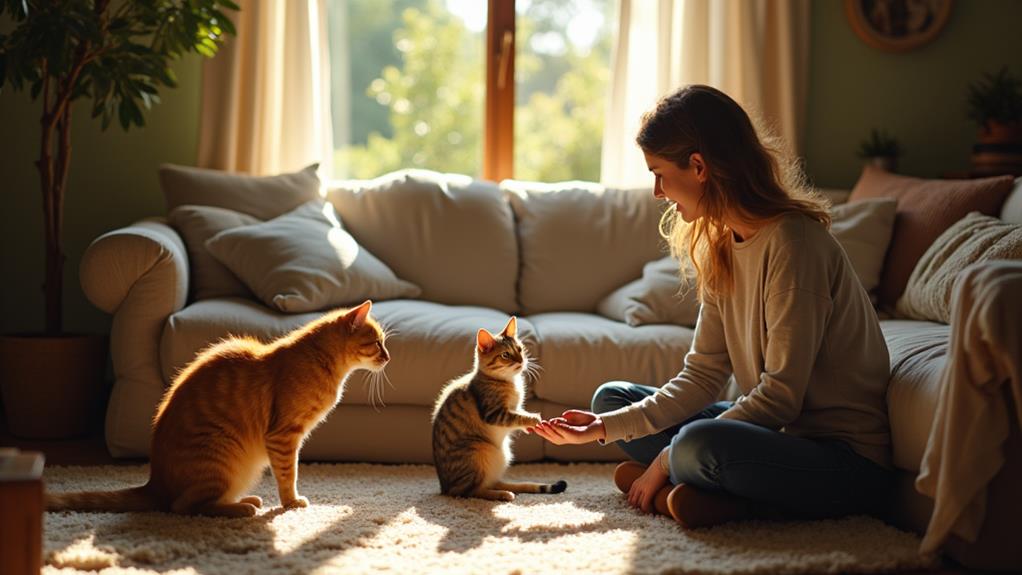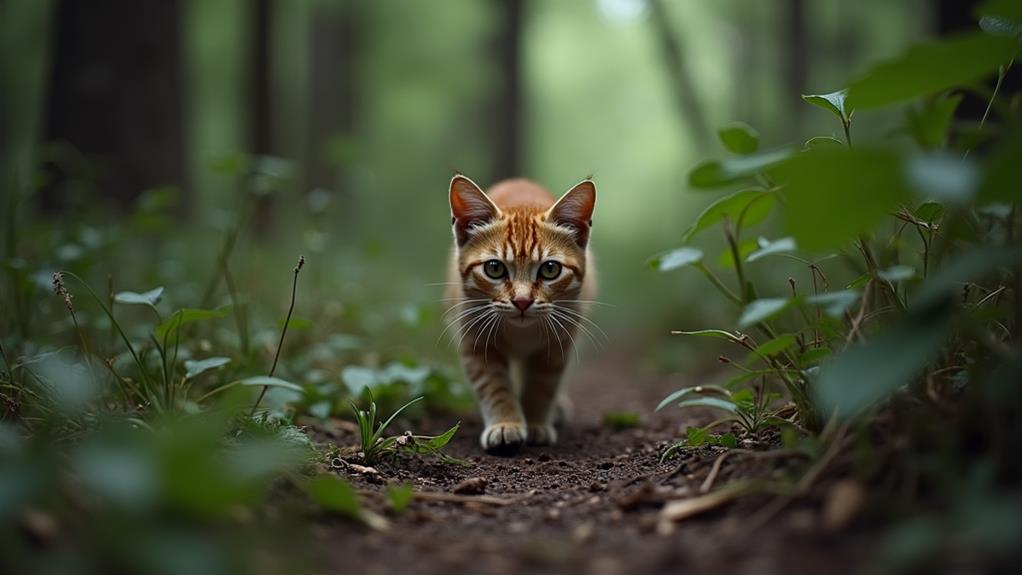How Long Does It Take for a Domestic Cat to Become Feral?
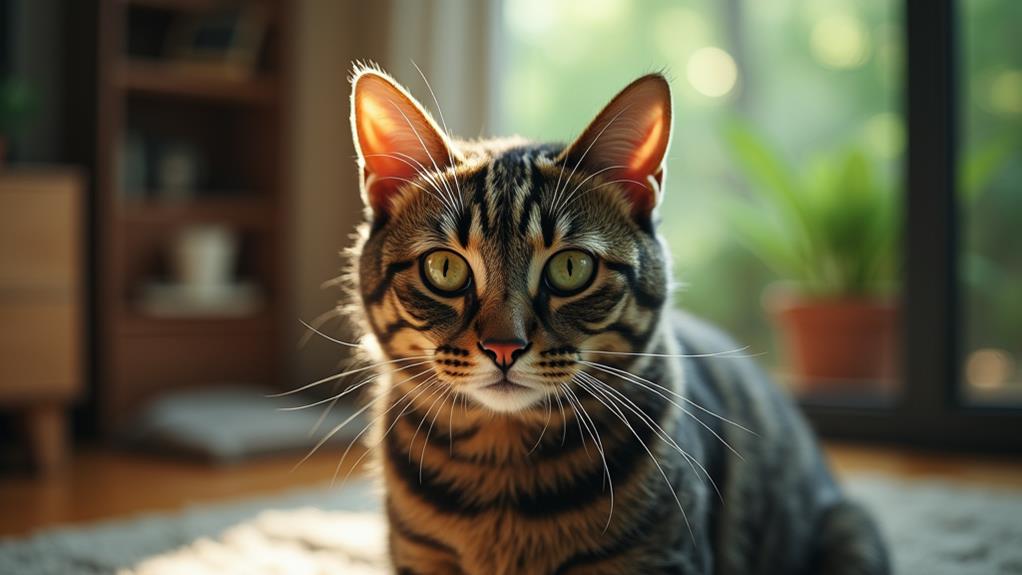
When your domestic cat loses regular human interaction, it can begin adopting feral behaviors within weeks. This change is influenced by factors like maturity, past human contact, and environmental conditions. Cats older than four months rapidly lose their adaptability to people, making the shift to a feral lifestyle smoother. Young kittens, however, have a higher chance of retaining socialization skills if quickly reacclimated to human presence. Once a cat accepts feral instincts, re-socializing them can prove challenging, especially after significant time in the wild. There's more to investigate about the intriguing dynamics of shifting from domestic to feral.
Defining Feral and Stray Cats
When understanding the world of outdoor cats, it is vital to distinguish between feral and stray cats. Feral cats are those unsocialized felines that have never been socialized to people. They avoid human interaction, often displaying fear when approached. These cats are typically born in the wild, or have been lost or abandoned and have since reverted to their wild instincts. They thrive outdoors and struggle to adapt to indoor living environments.
On the other hand, stray cats are domestic cats that have been previously socialized to people. They may have escaped, gotten lost, or been abandoned. Unlike feral cats, strays often remember their connection to humans and can sometimes be re-socialized and adopted into homes. They're more likely to seek companionship from humans and can adjust more easily to indoor life than their feral counterparts.
Understanding these differences is fundamental for effective management. Feral cats are generally more challenging to catch due to their fearfulness, while stray cats, remembering their past lives as domestic pets, might display friendly behaviors and seek human contact. Recognizing these distinctions helps you approach each type of cat appropriately.
Factors Influencing Feral Transition
Several factors greatly influence how quickly a domestic cat can shift to a feral state. One of the primary aspects is previous human contact. If a cat has had minimal interaction with people, it might be more prone to adopting feral behaviors rapidly. Stage at abandonment also plays a significant role. Kittens younger than four months are more adaptable and can socialize with humans more easily. However, if they're abandoned after this vital period, their socialization skills decrease, making it easier for them to become feral.
Environmental factors are important too. If a cat is left in an area with other feral cats, it might quickly learn and adopt their survival behaviors. The availability of food sources and shelter also determines how well a cat can adjust to feral life. A cat with access to food and safe hiding spots is more likely to survive without human support.
Lastly, individual temperament affects this change. Some cats naturally develop strong survival instincts, showing fear and avoiding human contact once they're left to fend for themselves. All these factors combined shape how swiftly a domestic cat might evolve into a feral one.
Timeframe for Cats to Go Feral
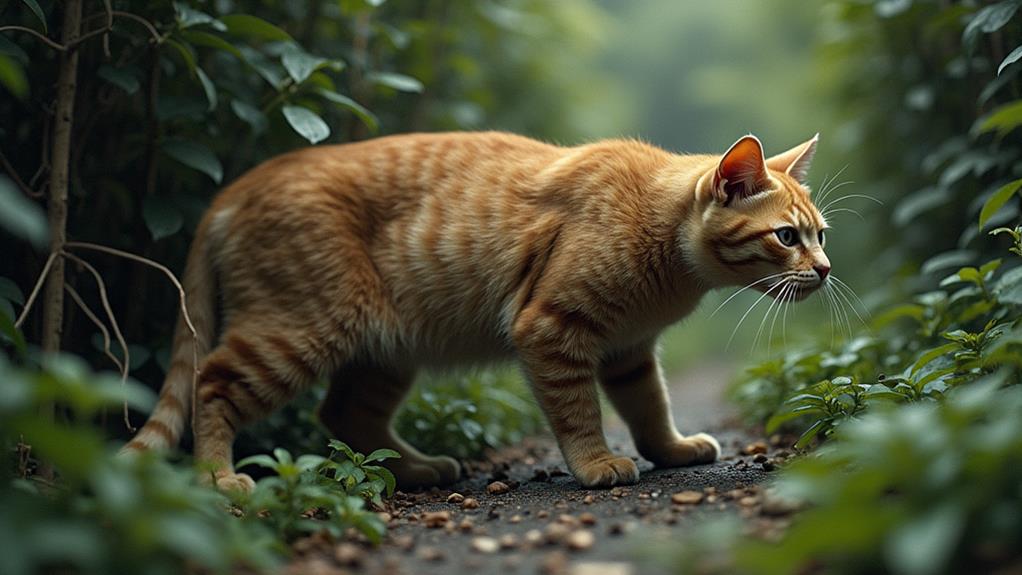
Shifting from a domestic to a feral state can happen surprisingly quickly for a cat. If a domestic cat finds itself abandoned or lost, it might start displaying feral behaviors within weeks, especially without human contact. The absence of socialization efforts, particularly after the cat reaches four months old, makes it more likely for the cat to develop a stronger fear of humans. During this vital period, their adaptability to an untamed lifestyle spikes.
For kittens, the timeline is even more pronounced. Those under eight weeks have the highest potential for successful socialization. However, without consistent human interaction, they can rapidly drift towards a feral existence. The window of time for intervention is short; therefore, regular human contact is essential during this phase to maintain their domestic nature.
As months pass without any human interaction, a domestic cat can fully convert to a feral state. It loses its socialization skills and the trust it once had in humans. This timeframe varies based on environmental factors and resources, but significant behavioral changes can occur rather quickly. Depending on these conditions, a domestic cat might become fully feral within weeks to several months.
Socialization and Its Role
Understanding the fundamental role of socialization in a cat's life is critical for preventing a shift to a feral state. Socialization involves consistent physical contact with humans, which is paramount, especially during the early stages of a kitten's life. Feral kittens often miss this important period, typically before 12 weeks, where interaction with people shapes their social behavior. If kittens don't experience this exposure during their formative weeks, they are more likely to become unsocialized outdoor cats, adapting to survive without human assistance.
When a domestic cat is abandoned or lacks human interaction, it can start displaying feral behaviors within weeks. This change happens even quicker if the cat is unneutered and can breed. The absence of socialization leads these cats to adjust to an unsocialized outdoor life, where they develop skills like hunting and finding shelter. Unfortunately, once a cat has accepted this lifestyle for about 4 to 6 weeks, it becomes increasingly difficult for them to revert to their previous domesticated state. The longer they remain in this environment, the more ingrained their feral behaviors become, making it hard for them to trust humans again.
Challenges of Resocializing Cats
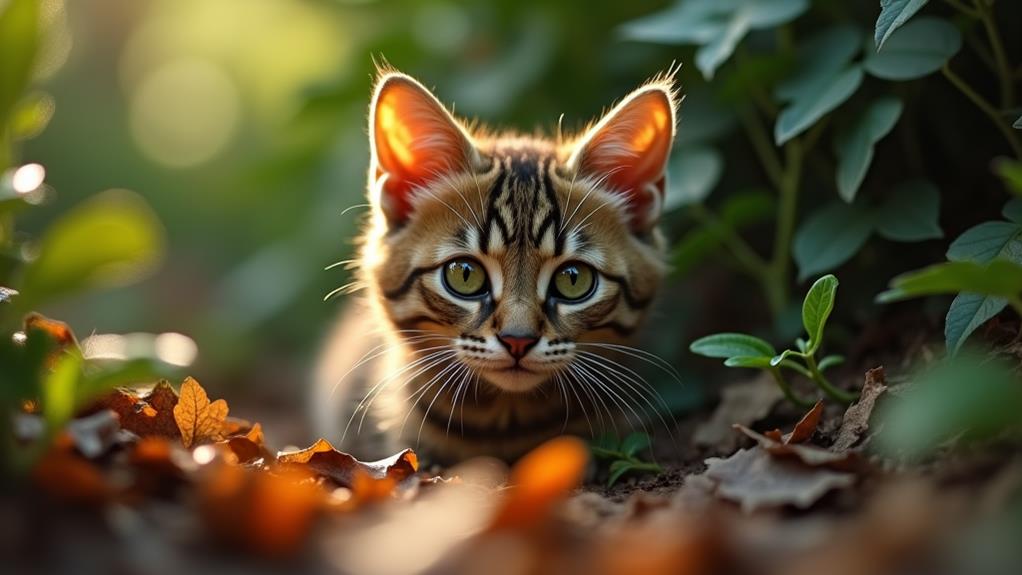
While socialization plays a fundamental role in preventing cats from turning feral, bringing a feral cat back to a domestic life presents its own set of challenges. Once a domestic cat becomes feral, usually due to a lack of human interaction, it can adapt quickly to outdoor life. This shift can happen in just a few weeks. However, resocializing these cats, especially if they're older than four months, can be a formidable task. Older feral cats often see humans as threats, making them difficult to approach and socialize.
When you try to bring a feral cat back into a domestic setting, patience is vital. Adult feral cats usually exhibit fearful behavior, often hiding or avoiding humans. This natural instinct to flee or hide complicates efforts to socialize them. Kittens not socialized by 10-12 weeks may carry this fear permanently, further complicating the taming process.
Resocializing a feral cat is a long-term commitment. You need to invest time to gradually build trust. Regular, gentle human interaction is fundamental, but progress can be slow. The cat's perception of humans as threats rather than companions requires a delicate approach to change.
Recognizing Feral Cat Behavior
Spotting feral cat behavior requires a keen eye and an understanding of their instincts. Feral cats often avoid being touched, exhibiting behaviors that differ considerably from stray or domestic cats. They tend to flee or hide when approached, their survival instincts driving them to avoid human interaction. Recognizing these behaviors is vital if you want to differentiate between a feral and a stray cat.
Here are some key signs of feral cat behavior:
- Fearful Reactions: Feral cats frequently hiss, arch their backs, or display aggressive postures when they perceive a threat. It's not aggression; rather, it's a defense mechanism to avoid danger.
- Wary of Confinement: When trapped, feral cats often cower, shake, or urinate out of fear. They prefer wide-open spaces where they can escape quickly.
- Colony Living: Unlike solitary domestic cats, feral cats thrive in colonies. They utilize their instincts to find food and shelter without human help, often working together for survival.
Understanding these behaviors helps foster positive interaction with feral cats. Recognizing their need to feel safe and respecting their boundaries is fundamental. Approach them with patience and empathy, knowing their behavior is driven by survival, not malice.
Importance of Neutering Programs
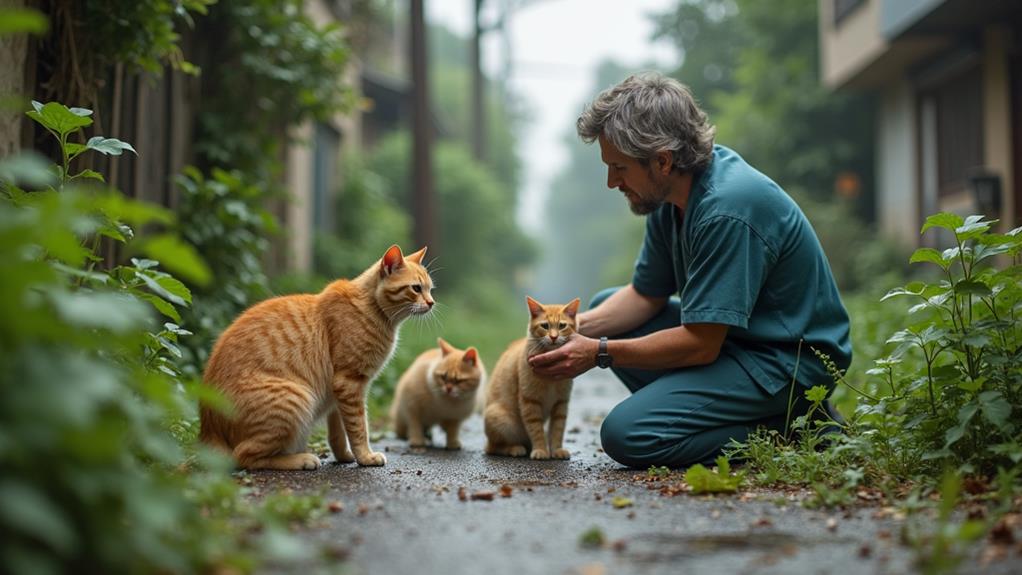
Neutering programs are crucial in managing feral cat populations and preventing their unchecked growth. By preventing overpopulation, you help curb the rapid expansion of feral colonies. A single unspayed female cat and her offspring can produce up to 420,000 kittens over seven years. This staggering number highlights why unneutered cats contribute greatly to feral populations. Neutering is a significant step you can take to mitigate this issue.
Participating in Trap-Neuter-Return (TNR) programs plays a critical role in controlling feral cat populations. In TNR programs, feral cats are trapped, neutered, and returned to their colonies. This approach not only stabilizes but also reduces feral populations over time. Neutered feral cats face fewer health risks, as they're less likely to contract diseases and sustain injuries from fighting and mating. By engaging in TNR, you're contributing to healthier feral communities.
Community education about neutering's importance further decreases feral cat populations. Educating others about how neutering improves welfare for both feral and domestic cats can drive considerable change. When you advocate for and participate in neutering programs, you play a crucial role in fostering healthier, more stable feral cat populations.
Effective Management Strategies
Managing feral cat populations effectively involves a multifaceted approach that emphasizes both prevention and intervention. You can start by implementing Trap-Neuter-Return (TNR) programs, which are essential for stabilizing feral cat colonies. By neutering the cats and returning them to their original environment, you prevent further reproduction while allowing them to live out their lives naturally. Alongside TNR, community education plays a significant role in reducing the number of domestic cats that turn feral. Educating pet owners about the importance of neutering and responsible pet ownership addresses the root causes of these populations.
To effectively manage feral cats, consider these strategies:
- Collaboration: Work with local shelters and veterinary services to offer low-cost neutering, alleviating the burden on rescue organizations and controlling the feral cat population.
- Monitoring: Regularly evaluate the socialization levels of community cats to determine if they need re-socialization or are better suited for TNR.
- Education: Support outreach programs that educate the public about feral cats, enhancing community involvement and promoting sustainable solutions.
Supporting Community Initiatives

Engaging in community initiatives plays a vital role in addressing the feral cat crisis. By supporting community initiatives focused on responsible pet ownership, you can help reduce the number of abandoned cats, which often become feral. One effective strategy is the Trap-Neuter-Return (TNR) program. TNR helps stabilize feral cat colonies and improves their general welfare through population control. It's a practical solution that allows these cats to live healthier lives while preventing further reproduction.
Collaboration is key in these efforts. By working with local shelters, veterinary services, and community organizations, you can facilitate low-cost neutering options. This makes it easier for pet owners to manage their cats responsibly, preventing unwanted litters. Public education campaigns also play a significant role by raising awareness about the importance of spaying and neutering pets. These campaigns educate the public, encouraging proactive steps to mitigate the feral cat crisis.
Getting involved in local initiatives not only supports the cats but also benefits the communities they inhabit. Sustainable solutions arise when everyone works together, leading to healthier environments for both humans and animals. Your participation can make a notable difference in this ongoing issue.


